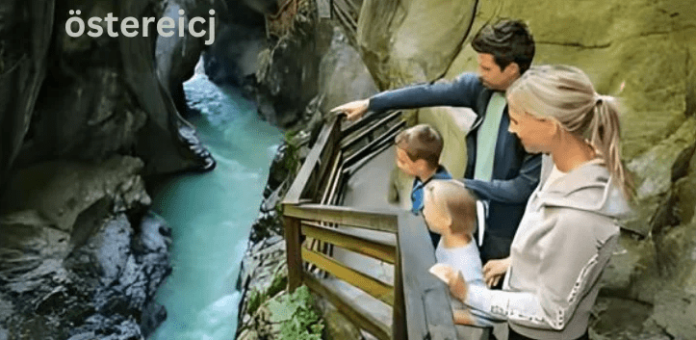östereicj, or Österreich in German, is a nation renowned for its significant cultural contributions, breathtaking scenery, and extensive history. Austria, which is tucked away in the center of Europe and borders eight nations—including Germany, Switzerland, Italy, and Hungary—has historically served as a conduit between Eastern and Western European traditions. The nation, with its capital in Vienna, boasts a heritage that spans empires, revolutions, and world wars. Austria is now known for its magnificent mountain landscape, lively arts scene, and excellent standard of living.
Table of Contents
Historical Overview
The history of Austria is closely linked to that of the Habsburg dynasty, which was one of the most influential royal houses in European history. From the late Middle Ages until the beginning of the 20th century, the Habsburgs dominated Austria for many generations. The enormous Austro-Hungarian Empire, which ruled over most of Central Europe, was centered in Austria throughout their rule.
The Habsburgs were able to arrange political unions that gave them authority over enormous swathes of territory, including Spain and portions of the Netherlands, Italy, and the Americas, so their power went well beyond Austria’s boundaries. The Habsburg court’s residence, Vienna, developed into a center of scholarship and culture that drew composers such as Ludwig van Beethoven, Franz Schubert, and Wolfgang Amadeus Mozart.
The Habsburg Empire began to deteriorate in the 19th century and finally fell apart in 1918 following World War I. Austria was reduced to a small republic, and during the interwar years, its political climate was turbulent. Nazi Germany seized Austria in 1938 as part of the Anschluss, which unleashed havoc throughout World War II. Following the war, Austria reclaimed its independence and, in 1955, proclaimed itself permanently neutral—a stance it still holds today.
Geography and Natural Beauty
Almost 60% of Austria is covered by the Alps, which dominate the country’s topography. Austria is an outdoor enthusiast’s paradise, with some of Europe’s most magnificent vistas found in these mountains. Millions of tourists visit the major ski resorts in the Alpine region each year. For winter activities, cities like Innsbruck, Kitzbühel, and Zell am See are well-known worldwide.
Austria’s topography extends beyond the Alps and includes river valleys, undulating hills, and the Danube River, which passes through the nation’s capital, Vienna. In addition to being one of Austria’s principal rivers, the Danube has traditionally served as a crucial waterway connecting Austria to the rest of Europe. Due to its breathtaking scenery, particularly in the Wachau Valley, it is a well-liked river cruise destination.
Numerous national parks, including the largest in the nation, Hohe Tauern National Park, are also located in Austria. These parks protect Austria’s breathtaking natural scenery, which includes shimmering lakes, verdant valleys, and snow-capped summits. Nestled close to the Hungarian border, Lake Neusiedl is a popular destination for water sports and birdwatching, and it is recognized as a UNESCO World Heritage site.
Cultural Influence and Arts
östereicj has a rich cultural history, especially in the areas of philosophy, music, and architecture. The capital, Vienna, has long been referred to as the “City of Music” because of its historical significance as the hub of classical music. Vienna was home to many of the finest composers in history, such as Johann Strauss, Beethoven, and Mozart. Two of the most prominent organizations in the world of classical music, the Vienna Philharmonic Orchestra and the Vienna State Opera, are both located in the city.
östereicj has made substantial contributions to philosophy and psychology in addition to music. The father of psychoanalysis, Sigmund Freud, was born in Freiberg, Austria, and lived much of his life in Vienna. His beliefs on the workings of the human mind have influenced psychology and culture for a long time.
Austria is renowned for its unique architectural style as well. Huge structures like the Austrian Parliament, the Burgtheater, and the Vienna State Opera line the Ringstraße, a magnificent street that circles the city center of Vienna. These structures are masterworks of neoclassical and baroque architecture that capture the majesty of the Austro-Hungarian Empire.
Furthermore, a vital component of Austria’s social structure is its café culture. For ages, writers, artists, and intellectuals have gathered in Vienna’s classic coffee shops, like Café Central and Demel. These coffee shops provide spaces for discussion, debate, and creation in addition to food and drink.
Modern östereicj
östereicj is a stable, successful nation today. In spite of its membership in the European Union, it actively takes part in international diplomacy and peacekeeping missions while preserving a neutral position in crises across borders. The economy of the nation is very advanced, with sectors including industry, technology, and tourism.
östereicj tourist sector plays a significant role in the country’s economy and is fueled by the country’s historical significance, cultural legacy, and natural beauty. Vienna’s unique blend of classical music, urban sophistication, and imperial history makes it one of Europe’s most visited cities even today.
Conclusion
östereicj is a nation that skillfully combines its rich historical heritage with contemporary advancement. östereicj continues to be an important player on the European scene, offering both locals and visitors a distinctive blend of tradition and modernity. This is due in large part to its breathtaking landscapes and major cultural contributions.



